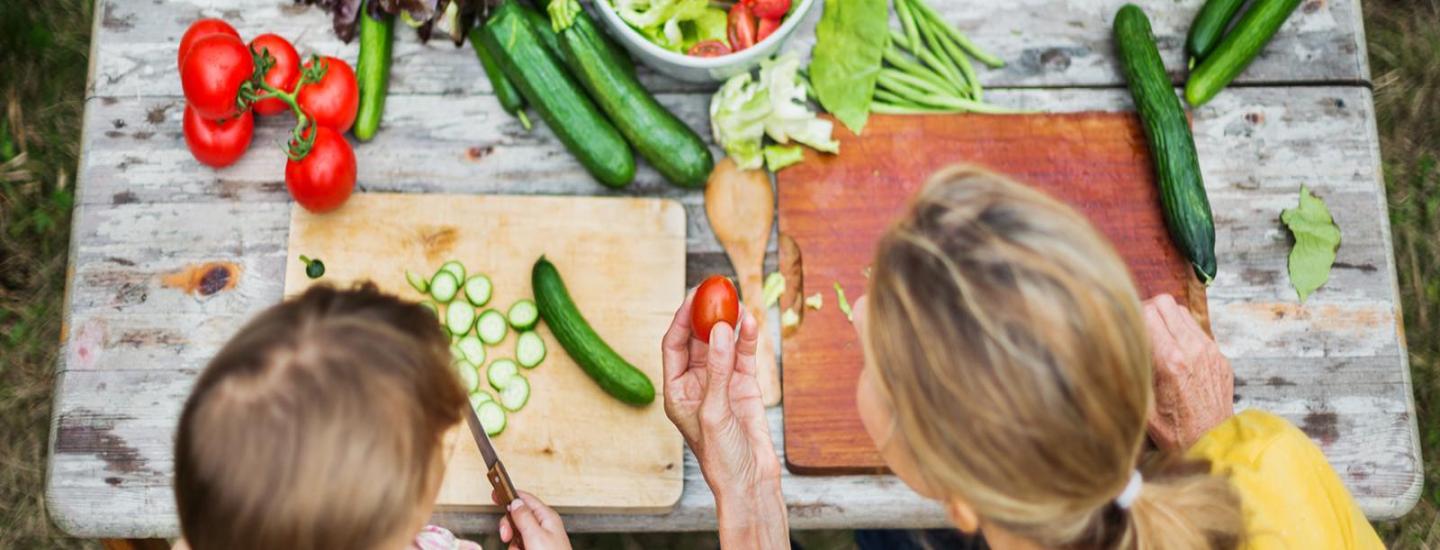A HEALTHY DIET FOR KIDS
Kids often adopt the same eating habits as their parents, so it’s important that you set a good example. Eat a balanced and varied diet and use the South African Food-Based Dietary Guidelines to assist in choosing foods.
1. Eat as a family
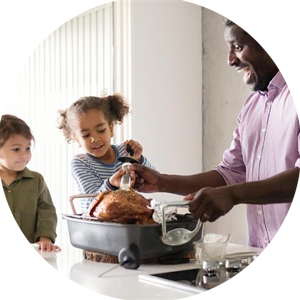
Have at least one relaxed meal per day together with the whole family – this gives kids the opportunity to tell you about their day at the same time. Memories are made at the table. Cook-together
2. Cook together
Cooking with kids is loads of fun for them and you! They love shopping, chopping, stirring and baking. Meals that they have made themselves are usually eaten up, even if they contain ingredients they don’t really like. While cooking, tell them what each individual ingredient contains and why these nutrients are good. And have fun – cook a vegetable stir-fry together and eat it with chopsticks!
3. Fruit and vegetables: mmm… delicious
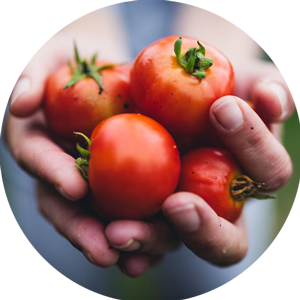
Children often prefer raw to cooked vegetables. Keep some raw vegetables aside while cooking and offer them to your kids if they get hungry between meals. Establishing a love for vegetables also establishes a healthy diet for kids.
- Small cheese and vegetable skewers, fruit skewers or crunchy vegetable sticks with a tasty dip are great in-between meals.
- ‘Hide’ vegetables by blending them and serving them as a sauce for pasta, rice, potatoes or meat.
- Blend veggies into a creamy soup.
- Create funny ‘faces’ out of brightly coloured vegetables or fruit.
- Make fruit milkshakes, smoothies, ice lollies or mix into yoghurt. A little imagination really helps ensure good nutrition for children.
- Try the ‘Treasure Island Pizza’ – pizza topped with plenty of fresh vegetables in the design of a treasure map.
4. Breakfast: the morning’s energy boost
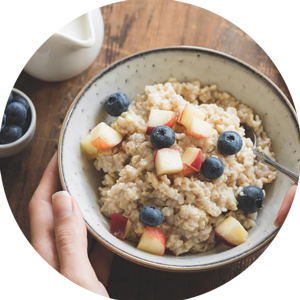
Your kids need a good breakfast in the morning to provide their body and mind with new energy after the long night.
There are four components to a balanced breakfast:
- Powdered drink for growing children: NESTLÉ NIDO® 3+ is a drink for growing children and is a a source of vitamins and minerals like vitamin A, C, D, E, iron, zinc and calcium.
- Fruit or vegetables: Tasty apple slices, bananas, grapes, cucumber, peppers, carrots or radishes also taste good in the mornings – either as finger food or on skewers. Or try fruit smoothies
- Bread or cereals (wholewheat is best): An excellent alternative to the morning slice of bread with lean sausage, cheese or a sweet spread is a home-made muesli with oats or other cereal flakes.
- A drink: Calorie-free thirst quenchers such as mineral water or unsweetened herbal and fruit teas are ideal, but diluted fruit juices of 1/3 juice to 2/3 water are also OK.
It is best for children to have two breakfasts. The first forms the basis for the day. The second is eaten during the morning – a substantial snack during breaktime at nursery or school. Check out our Best Start to the Day Breakfast Ideas.
5. Healthy fast food
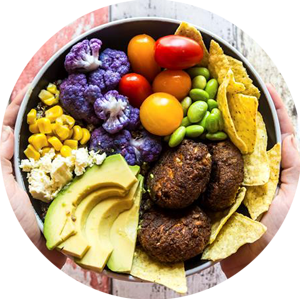
Kids love hamburgers, pizza and pasta. Make them healthy fast food at home:
- Cook a chicken breast or hamburger using lean mince. Serve it in a wholegrain roll with plenty of salad and vegetables.
- Sprinkle pizza with lots of fresh vegetables
- Prepare wholegrain pasta with a sauce made from puréed vegetables.
6. What to do if your child is overweight?
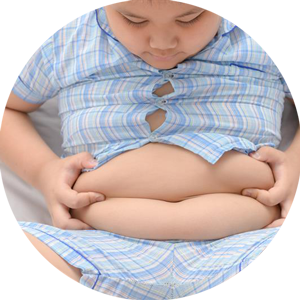
If a child weighs too much, the whole family must take measures against it.
- Regular mealtimes help avoid hunger pangs. Three main meals and up to two snacks are recommended and should be eaten together as a family as often as possible. This is because children and young people who eat with their family at least three times a week tend to maintain a healthier weight and demonstrate healthier patterns of eating behaviour than children who eat on their own.
- Distractions such as TV or mobile phones should be banned during meals – these lead them to eat more.
- Drink water before and during the meal – it fills the stomach and lessens hunger.
- Take a small portion at first, cut everything carefully and eat slowly. In this way, it is easier to tell when you are full.
- Never use food as a reward. The child is then comforted by food when they are sad or stressed. Rather praise the child, do something together or read a story to them.
If your child is very overweight, speak to a dietitian. He or she will discuss and help you put together an eating plan for your child.
7. Exercise is fun

Kids need lots of exercise, particularly if they tend towards being overweight. Plus it’s fun and something you can all enjoy together.
- Urge your child to walk – three year olds, for example, no longer have to be in a buggy for walks. Do something active with your family at the weekend: Swimming, walking and climbing are fun for everyone.
- Does your child enjoy a particular type of sport? Register them with a sports club or your local gym with kids’ facilities
- Limit the amount of time your child spends watching TV, videos or using a smart device. Free time is better spent jumping, running, skipping and playing. As a basic guide: Until primary school age, half an hour to an hour of media time is OK. For older children, this should be a maximum of one to two hours per day.
If your child is very overweight, speak to a dietitian. He or she will discuss and help you put together an eating plan for your child.

Adding probiotics (LAB) into your child’s daily meal plan and general diet can help create a healthy balance of bacteria within the gut. Probiotics (LAB) are available in a variety of foods.
